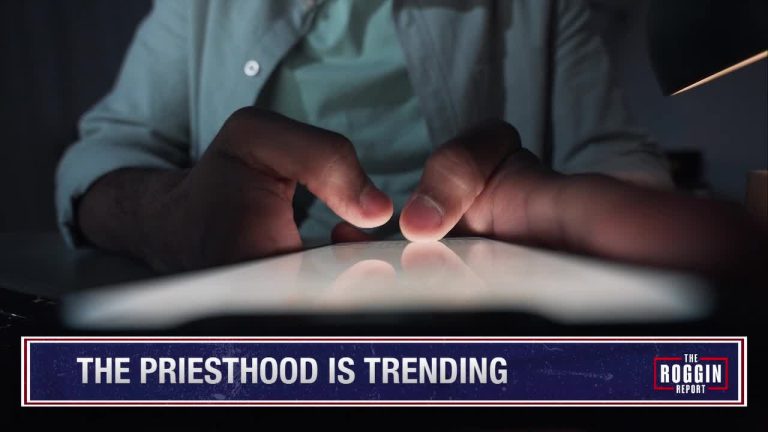Social Media’s Surprising Impact: Is the Priesthood Trending for Gen Z?
The hallowed halls of religious institutions may seem a world away from the frenetic, ever-evolving landscape of social media. Yet, a surprising trend is emerging: Gen Z, the digital natives steeped in the world of likes, shares, and viral trends, are increasingly expressing interest in religious vocations, particularly the priesthood. This phenomenon, seemingly paradoxical in an age often marked by secularism and digital distractions, has sparked considerable interest and debate amongst religious leaders, sociologists, and media commentators alike. While the definitive reasons behind this resurgence remain complex and multi-faceted, the influence of social media itself appears to be a significant, albeit unexpected, catalyst.
Traditionally, the path towards religious life was often shaped by familial influence, community involvement, and personal spiritual awakenings nurtured within established religious structures. However, the digital age has introduced a new dynamic. Social media platforms, initially perceived as potential distractions from spiritual contemplation, are now serving as unexpected conduits for religious exploration and engagement. Priests and other religious figures are increasingly utilizing these platforms to connect with younger audiences, sharing their daily lives, theological reflections, and insights into the joys and challenges of religious service. This offers a humanizing glimpse into a life often shrouded in mystique, making it more relatable and accessible to a generation accustomed to consuming information through visual and easily digestible formats. The curated, often aesthetically appealing, presentation of religious life on platforms like Instagram and TikTok, combined with the ability to engage directly with religious leaders, has demystified the priesthood and fostered a sense of connection that was previously harder to achieve.
Beyond individual engagement with religious figures, online communities centered around faith are also flourishing. These digital spaces provide a sense of belonging and shared purpose, particularly for young people who may feel isolated in their faith journey within their offline communities. These platforms offer a safe haven to explore complex theological questions, share personal experiences, and receive support from like-minded individuals, often spanning geographical boundaries. This sense of community, fostered through shared memes, online discussions, and virtual prayer groups, can be particularly appealing to a generation that values connection and authenticity. Moreover, the algorithms driving social media platforms can inadvertently reinforce this trend. By identifying users with interests in religion or spirituality, these algorithms suggest similar content, creating echo chambers that amplify religious messaging and potentially influence career considerations.
However, the rise of “priestfluencers” and the increasing reliance on social media for religious engagement is not without its complexities and potential drawbacks. Critics argue that the highly curated nature of online presentations can offer a sanitized and potentially unrealistic portrayal of religious life, glossing over the sacrifices, challenges, and less glamorous aspects of serving a community. Furthermore, the emphasis on visual aesthetics and personal branding can inadvertently shift the focus away from the core tenets of faith and towards the individual persona of the religious figure. Concerns have also been raised about the potential for echo chambers and the propagation of misinformation within online religious communities, which lack the moderation and oversight found in traditional religious institutions. The constant pressure to maintain an online presence and engage with followers can also be a source of stress and distraction for religious leaders, potentially hindering their ability to focus on their pastoral duties and spiritual development.
Despite these challenges, the impact of social media on religious vocations, particularly amongst Gen Z, is undeniable. The increased visibility and accessibility of religious figures, combined with the fostering of online faith communities, has created a new pathway for young people to explore their spirituality and consider a path towards religious service. This trend, though still relatively nascent, represents a significant shift in how religious institutions engage with younger generations and recruit new members. For religious leaders, understanding and harnessing the power of social media is no longer optional but essential for connecting with a digitally native generation and ensuring the continued vitality of their faith traditions.
Moving forward, it is crucial to navigate the intersection of faith and social media thoughtfully and critically. Religious leaders must prioritize authentic engagement, fostering genuine dialogue, and providing realistic portrayals of religious life while mitigating the potential pitfalls of online communities. Likewise, young people considering religious vocations should approach online portrayals with discernment, seeking guidance from established religious institutions and engaging in offline community experiences to gain a comprehensive understanding of the demands and rewards of a life dedicated to faith. The surprising impact of social media on Gen Z’s interest in the priesthood underscores the evolving landscape of religious engagement and the importance of adapting to the digital age while staying true to the fundamental values of faith.


